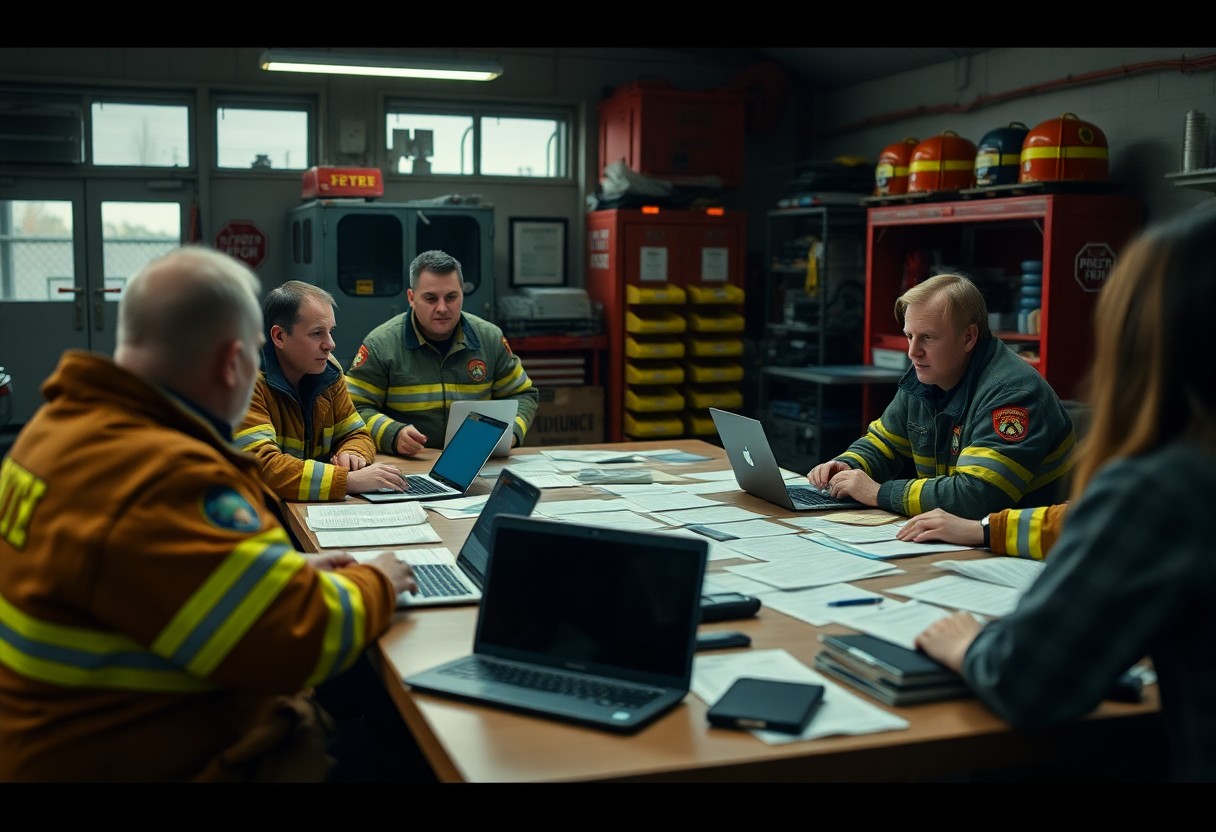Just when you think funding for your volunteer fire department is limited to FEMA grants, there are actually multiple non-FEMA grants available that can help support your operations. Understanding how to navigate this landscape can greatly enhance your department’s resources and capabilities. By exploring alternative funding sources, you can improve equipment purchases, training programs, and community outreach. This blog post will guide you through the process, enabling you to secure vital funding that ensures your department can continue to protect your community.
Key Takeaways:
- Research available sources: Volunteer fire departments should explore various foundations, local businesses, and non-profit organizations that offer grant funding specifically for fire and emergency services.
- Develop a compelling proposal: Craft a clear and persuasive grant proposal that outlines the department’s needs, project goals, and how the funding will impact the community.
- Build relationships: Establish connections with grantmakers and other community organizations to increase visibility and enhance the likelihood of receiving funding through networking and partnership opportunities.
Unlocking the Grant Universe: Non-FEMA Funding Sources
Various non-FEMA funding sources exist to support volunteer fire departments in their mission. Tapping into these resources can enhance your operational capabilities and improve community safety. From local foundations to statewide initiatives, organizations focus on emergency services can provide financial backing for equipment, training, and outreach programs. Engaging with these funding opportunities ensures your fire department is well-equipped to respond effectively, creating a safer environment for all.
Exploring Alternative Grant Opportunities
Your fire department can diversify funding by exploring alternative grants available at state, regional, or even private levels. Organizations like the Firehouse Subs Public Safety Foundation offer grants specifically aimed at emergency services. Additionally, the Assistance to Firefighters Grant (AFG) Program, while FEMA-connected, can also have distinct components that serve local needs. Seeking out these opportunities expands your funding horizons and aligns with your department’s goals.
Key Organizations Offering Non-FEMA Grants
A range of organizations focuses on supporting emergency services through non-FEMA grants. Local nonprofits, the Public Safety Foundation, and community foundations frequently provide financial assistance tailored for fire departments. You can reap the rewards of flexible funding opportunities to equip your team with necessary resources, enhance training methods, and expand community outreach initiatives.
Among the key organizations, the Firehouse Subs Public Safety Foundation stands out, having awarded over $69 million in grants to first responders since its inception. Their funding typically covers equipment purchases, training initiatives, and safety gear, addressing specific community needs. Similarly, the Local Initiatives Support Corporation (LISC) offers grants that can be directed towards developing programs that promote community safety. Identifying and approaching these organizations can lead to valuable partnerships that bolster your department’s capabilities, ensuring that you meet local demands effectively and efficiently.
Navigating the Application Labyrinth: Strategies for Success
Your journey through grant applications can feel overwhelming, but a strategic approach simplifies the process. Start by creating a detailed timeline for submission deadlines, required documents, and follow-ups. Prioritizing grants that align closely with your department’s needs increases your chances of securing funds. Engaging with other volunteer fire departments for shared resources, tips, and joint proposals can also provide valuable insights and strengthen your application.
Crafting a Compelling Proposal
A winning proposal tells a story about your fire department and its needs. Clearly outline your goals, provide specific examples of how funding will enhance your services, and include statistical data to back your claims. Highlight past successes and community impact to paint a vivid picture of your department’s dedication and capability.
Understanding Requirements and Restrictions
Familiarity with each grant’s guidelines is non-negotiable. Each funding source comes with its own set of requirements and restrictions, including eligibility criteria, permissible expenses, and submission formats. Carefully reading this information will prevent unnecessary time spent on applications that won’t fit your department’s profile.
Many grants require specific documentation, such as proof of nonprofit status and detailed budgets. Additionally, some may mandate matching funds or in-kind contributions, meaning your department needs to demonstrate that you can support the financial request. Ensure your proposal adheres strictly to word counts, formatting specifications, and deadlines outlined in the guidelines to avoid disqualification. By understanding and following these requirements, you position your fire department favorably within the crowded grant application landscape.
Building Partnerships: Collaboration for Greater Impact
Forging strong partnerships can significantly enhance your fire department’s funding opportunities. By engaging with local businesses and organizations, you can create a support network that amplifies your fundraising efforts, shares resources, and ultimately strengthens community ties. Collaborations can lead to joint grant applications, shared initiatives, and increased visibility, all of which can make your department more appealing to potential funders.
Leveraging Community Resources
Utilizing community resources allows you to maximize your operational capacity without overextending your budget. Look to local businesses, schools, and civic organizations to provide donated materials, volunteer labor, or even financial support. By building a network of community support, you can demonstrate to grantors the widespread commitment to your mission.
Forming Alliances with Local Organizations
Creating alliances with local organizations fosters a collaborative spirit that can elevate your funding capabilities. Local non-profits, civic groups, and schools often share a common interest in emergency preparedness and community safety. Engaging in joint initiatives, such as public safety training sessions or fundraising events, can strengthen your grant applications by showcasing a unified community effort.
For instance, consider partnering with the local school district to implement a fire safety education program. Not only does this initiative enhance community awareness, but it also opens doors to grant opportunities geared toward public safety education. Jointly applying for grants can provide a larger total funding request that demonstrates a commitment from multiple stakeholders, thereby increasing your chances of approval.
Sustaining Long-Term Funding: Beyond Initial Grants
Long-term sustainability of funding is necessary for volunteer fire departments, ensuring they can maintain equipment, training, and operational readiness. Developing a comprehensive funding strategy enables you to balance immediate financial needs with future investments. This approach involves diversifying your funding sources and establishing a system for ongoing financial support through both traditional and innovative avenues. By treating funding as part of your operational strategy rather than a one-time fix, you can position your department to thrive despite the ever-changing financial landscape.
Establishing Continuous Funding Streams
Creating continuous funding streams requires you to explore local partnerships, sponsorships, and community fundraising events. Engaging with businesses and organizations that share your mission can yield mutual benefits, such as shared visibility and enhanced public relations. Additionally, consider developing dedicated programs, like a Fire Department Membership or Supporter Program, that can attract annual memberships or contributions from your local community.
Engaging Stakeholders for Ongoing Support
Building strong relationships with stakeholders is vital for sustained support. Engaging local government officials, businesses, and community members allows you to advocate for consistent funding. Setting up stakeholder meetings, creating newsletters, and utilizing social media to keep your supporters informed fosters transparency and trust, encouraging continued engagement.
Involving stakeholders often means going beyond simple outreach. You can implement regular community forums or town hall meetings, ensuring various voices are heard and feel invested in your department’s success. Highlighting the direct impact of funding—such as improved response times or additional training opportunities—communicates the importance of their support. Creating a feedback loop, where you actively solicit and respond to stakeholder input, enhances your credibility and solidifies long-term relationships, ensuring your fire department has the backing it needs for the future.
The Role of Volunteer Fire Departments in Community Resilience
Your local volunteer fire department serves as a linchpin in community resilience, enhancing not just firefighting capabilities but overall safety and preparedness. By responding quickly to emergencies, providing imperative training, and participating in community events, they foster a spirit of collaboration and support. Their presence reassures residents and bolsters confidence in local emergency response systems, allowing for quicker, more effective reactions in times of crisis.
Impact on Local Safety and Preparedness
Volunteer fire departments significantly enhance local safety and preparedness by offering direct access to emergency services and resources. Their presence allows for rapid response to incidents, minimizing potential damage and ensuring community members feel secure. With ongoing training programs and engagement with local organizations, they instill vital safety practices in residents, helping them to prepare for disasters.
Advocacy and Awareness in Grant Acquisition
Advocacy efforts by volunteer fire departments not only help secure funding but raise awareness about imperative safety and preparedness issues in your community. By actively engaging local stakeholders, they can highlight their needs, illustrating the importance of their role in public safety. These initiatives often involve collaboration with local government and community organizations, strengthening both funding opportunities and community ties.
In advocating for grant acquisition, your volunteer fire department can mobilize community support through targeted campaigns that highlight specific funding goals. For example, presenting data on response times before and after receiving equipment upgrades emphasizes the immediate need for assistance and encourages local stakeholders to contribute. Moreover, hosting town hall meetings or outreach events can foster a deeper understanding of your department’s operations and the critical role it plays, ultimately increasing community buy-in and influencing potential grant providers.
Summing up
To wrap up, accessing non-FEMA grants for funding your volunteer fire department involves researching potential local, state, and private grant opportunities tailored for emergency services. You should focus on building relationships with community organizations, utilizing grant writing resources, and staying informed about application deadlines. Don’t hesitate to engage with other departments to share insights and strategies, which can enhance your chances of securing necessary funding to support your operations and equipment needs.



